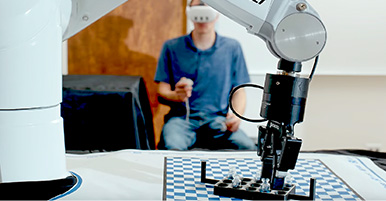Citation
Whiting, G. L. Digital Fabrication of Flexible Electronic Systems. Semicon West 2014.
Abstract
As printed transistor and sensor technologies advance, their integration into complex electronic systems becomes possible. Electronic design of such systems requires a systematic approach to simulation and design that takes into account the distinct challenges and opportunities presented by printed devices. In this talk, the speaker will discuss PARC’s approach to circuit design and modeling in the context of building sensor systems in partnership with Thinfilm Electronics based on an ink-jet printed organic TFT process. Through the use of digital printing methods (such as ink-jet), custom electronic systems can be additively fabricated in an on-demand fashion. This can be approached by formulating solution-based inks of conductors, dielectrics and semiconductors, and directly printing these materials to form logic circuits, sensors, memory and power sources that when integrated can provide devices to address a number of flexible and wearable electronics applications. In order to further improve the performance these devices, a hybrid approach can be followed where prefabricated Si-CMOS components are integrated into the printed system to provide functionality that is difficult to achieve with all-printed components (such as wireless communication and high resolution analog-to-digital conversion). For some applications this approach can provide the optimal balance between electrical and mechanical performance, customizability and cost. Examples of both all-printed and mostly-printed sensor systems will be described. In order to digitally, additively fabricate high performance electronic devices we have developed a system of mesoscale assembly for arbitrary patterning of microelectronic components. Taking inspiration from xerography (where large numbers of micron-sized toner particles are assembled electostatically), a method of programmable assembly of pre-fabricated microchips using electric fields will be described. Here, small silicon pieces (100s of microns in size) are fabricated and formulated into a solution-based ink. The chips are pre-treated to bear a pattern of electric charge, so that they respond to dynamic electric fields which are used to freely orient and transport them into position with micron-level accuracy. Once correctly assembled, the chips are then transferred and fixed to a final substrate, and interconnections are made. Such a system should enable a digital, print-like method of assembling and integrating high-performance electronics over large areas and onto flexible substrates.


